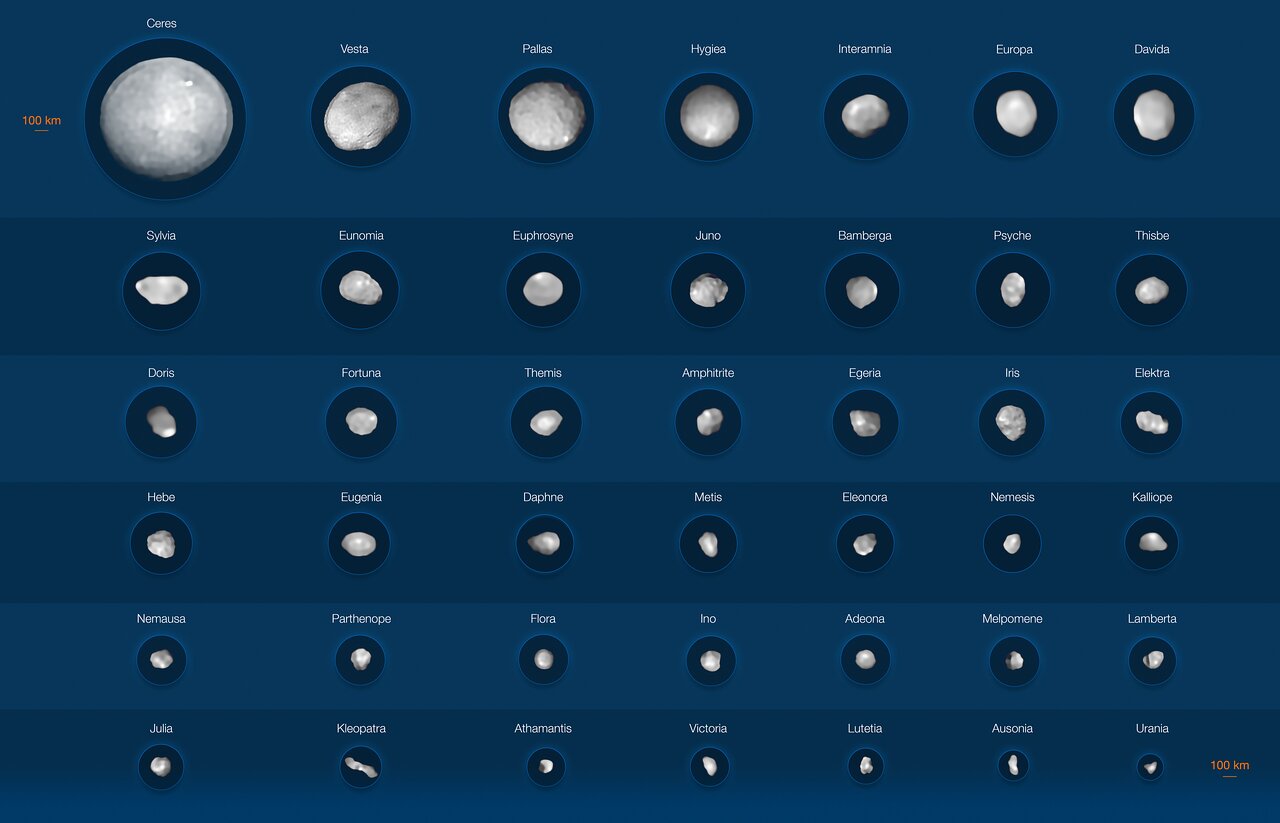42 of the largest asteroids: from spheres to dog bones
More than 650,000 objects orbit in the solar system’s asteroid belt between Mars and Jupiter. Astronomers at the European Southern Observatory ESO imaged 42 of the largest in a large-scale effort from 2017 to 2019; the results have now been published. What did they notice?
Different shapes: By reconstructing the shapes of the objects, the team found that the observed asteroids are divided into two families. Some are almost perfectly spherical, such as Hygiea and Ceres, while others have an elongated shape. The most unusual shape is the “dog bone” asteroid Cleopatra.
Different densities: by combining the shapes of the asteroids with their masses, the researchers found that densities vary significantly within the sample. The four least dense asteroids, including Lamberta and Sylvia, have densities of about 1.3 grams per cubic centimeter, which is about the same as coal or slightly more than the density of water. These asteroids are likely to be composed primarily of ice and clumps of dust. The densest asteroids, Psyche and Calliope, have densities of 3.9 and 4.4 grams per cubic centimeter, respectively, which is more than the density of diamond. Here, a composition of rock is to be assumed.
Variable origin: The large density differences show that also the composition of the asteroids varies strongly. This allows conclusions to be drawn about the origin of the asteroids. “Our observations suggest that these bodies have migrated considerably since their formation. In short, we can only understand this enormous diversity in their composition if the bodies were formed in different regions of the solar system,” explains Josef Hanuš of Charles University in Prague, Czech Republic, one of the study’s authors. In particular, the results support the theory that the lowest-density asteroids must have formed in the remote regions beyond Neptune’s orbit and then migrated to their present location.
